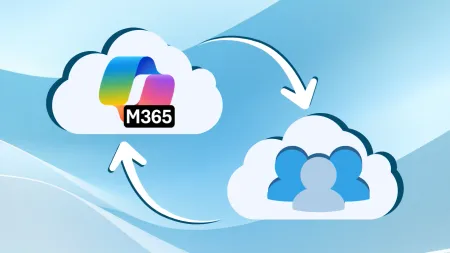Reducing Large Operating Costs with Skype for Business Teams
Looking to Upgrade Skype for Business to Microsoft Teams news upgrading skype business microsoft teams There are only two reasons any busin...

Looking to Upgrade Skype for Business to Microsoft Teams?
There are only two reasons any business spends money.
One is to produce more revenue. The other is to reduce costs. All other business motivations have their roots in these two.
Now would be a very good time to point out that the title of this post starts with the word “eliminating,” not “reducing.”
How Skype for Business Eliminates Large Operating Expenses
Phone Bill – A company with about 20 locations worldwide discovered that half of its monthly phone bill was spent on calls made between two of its offices. The company implemented Skype for Business and eliminated that entire part of the bill. Any calls made between its sites, or from its locations to personnel in the field, were made using Skype for Business. Internal phone costs eliminated.
Travel & Entertainment – A similar company with multiple locations and a distributed remote workforce held quarterly strategic meetings. Its leadership teams flew to the corporate headquarters for these meetings. One day the CEO took a look at what all that travel and lodging was costing the company. Shortly thereafter, he had his IT manager implement Skype for Business, which completely eliminated all that travel, replacing it instead with simple multi-site video-conferencing.
Lost Opportunities – Having gotten into the habit of doing a post-mortem on every deal lost, a company discovered that the biggest reason it lost opportunities was because it took so long to produce and submit a proposal. The process would begin with a salesperson taking a day or so to write up the opportunity that would then be forwarded to the executive team for pricing. Questions would go back and forth for a few days until a price was determined.
Then the information was forwarded to marketing who would take a few days to assemble a proposal document. They would then forward the proposal to engineering so it could add the Scope of Work required to complete the proposal. This took about a week before it was forwarded to the salesperson to review. After a day or so of review, the complete proposal was submitted back to the executive team for approval. If all was well, they took about a week to return a final approval. About a month after identifying the opportunity, the salesperson set up an appointment to present the proposal.
Winning with Skype for Business
Their winning competitor, meanwhile, had implemented Skype for Business. When a salesperson brings in a new opportunity, she attempts to pull all relevant employees into an ad hoc videoconference by clicking and dragging their pictures into the conference window on her computer. If everyone is not available at the moment, the salesperson quickly checks all of their calendars to determine the next time everyone needed will be free. An invitation goes out and, at the appointed time, everyone clicks on the invitation to join the video conference, including representatives from sales, marketing, engineering and the executive group.
Winning with Skype for Business
By the end of the videoconference, the proposal is complete. It is delivered to the customer the next day. The iron is struck while it is still white hot.
The customer appreciates the prompt attention and response and approves the proposal.
Skype for Business streamlines communication so you can cut through approval processes and get work done faster and more efficiently. Empowering your team to collaborate remotely opens the door to endless opportunities and potential savings.
The customer appreciates the prompt attention and response and approves the proposal.
Conrad Agramont is the director of technology services at Agile IT, a San Diego-based IT consulting firm and Microsoft Gold Partner that helps companies leverage private, public and hybrid clouds to maximize business efficiency.





